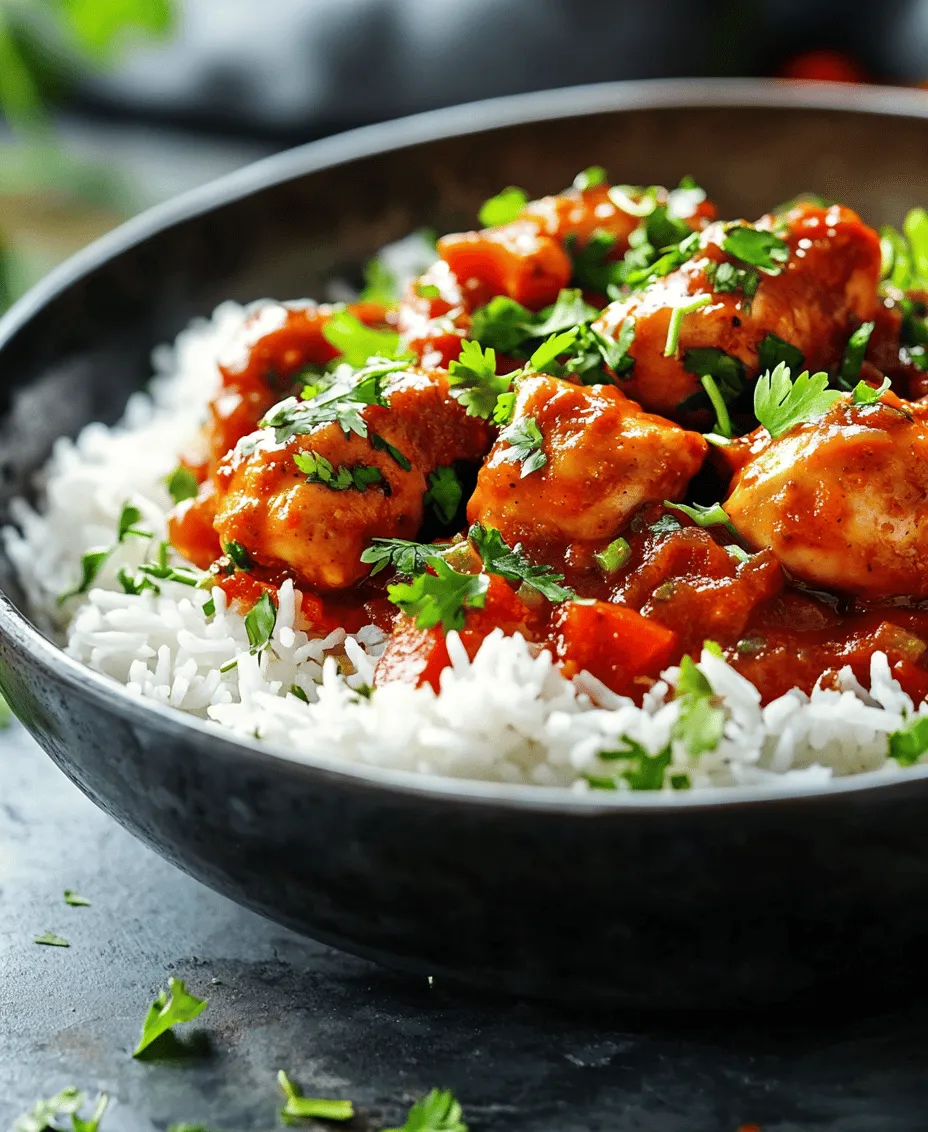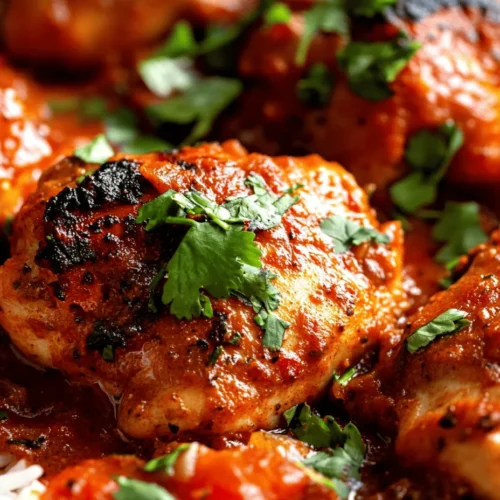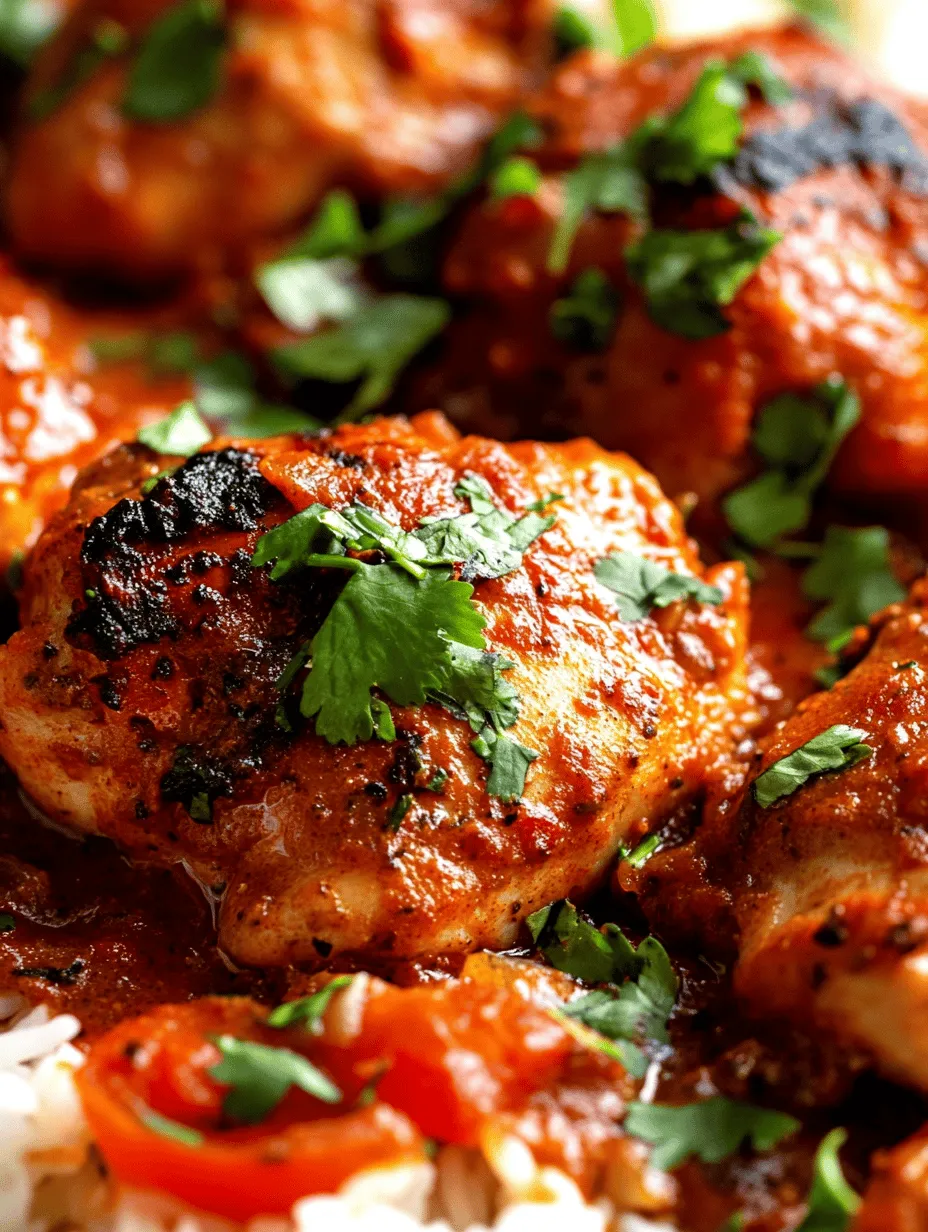Introduction to Spicy Delight: Gordon Ramsay’s Chicken Tikka Masala
Chicken Tikka Masala is more than just a dish; it’s a culinary experience that transports your taste buds straight to the vibrant streets of India. This beloved staple has transcended its origins, gaining immense popularity not only in Indian restaurants worldwide but also in the comfort of home kitchens. Its rich, aromatic sauce, succulent marinated chicken, and a medley of spices create a dish that is both comforting and exhilarating. This iconic recipe has been reimagined by many chefs, but Gordon Ramsay’s version stands out for its bold flavors and meticulous attention to detail.
Gordon Ramsay, a name synonymous with culinary excellence, brings his unique flair to Chicken Tikka Masala, elevating it to new heights. His approach combines traditional techniques with modern twists, ensuring that every bite is an explosion of flavor. The dish’s cultural significance cannot be understated; it is often considered a symbol of the Indian diaspora, showcasing how food can bridge cultures and create connections. Whether served in upscale restaurants or at family gatherings, Chicken Tikka Masala has firmly established itself as a favorite across the globe.
What makes Gordon Ramsay’s Chicken Tikka Masala particularly appealing is his emphasis on fresh ingredients and authentic flavors. The use of tender chicken thighs, a variety of spices, and creamy coconut milk results in a dish that is not only delicious but also deeply satisfying. In this article, we’ll delve into the vibrant world of this recipe, exploring its rich history, the role of each ingredient, and a step-by-step guide to preparing it at home.
Understanding the Ingredients of Chicken Tikka Masala
To create a memorable Chicken Tikka Masala, understanding the role of each ingredient is essential. This dish relies on a harmonious balance of flavors and textures, achieved through a careful selection of components. Let’s explore the key ingredients that make up this beloved recipe.
Chicken Thighs
When it comes to the choice of chicken for Chicken Tikka Masala, boneless chicken thighs are the preferred option. Unlike chicken breasts, which can dry out during cooking, thighs remain tender and juicy, thanks to their higher fat content. This richness not only enhances the flavor but also provides a satisfying bite that pairs beautifully with the aromatic sauce. Additionally, the marination process infuses the chicken with spices and yogurt, making it even more flavorful. Chicken thighs can take on bold flavors exceptionally well, making them the ideal choice for this dish.
Yogurt
Yogurt serves a dual purpose in this recipe: it acts as a marinade and a tenderizer. When combined with spices, yogurt helps to break down the proteins in the chicken, resulting in a more tender texture. The acidity of the yogurt also adds a subtle tanginess that balances the richness of the dish. For Gordon Ramsay’s Chicken Tikka Masala, using plain yogurt is recommended, as it allows the spices to shine without overwhelming the palate. Marinating the chicken in yogurt for at least an hour—though overnight is ideal—will ensure maximum flavor infusion.
Spices
The magic of Chicken Tikka Masala lies in its intricate blend of spices, each contributing its unique flavor profile. Here are some of the essential spices used in this recipe:
– Cumin: Known for its warm, earthy flavor, cumin adds depth to the dish. It is also rich in antioxidants and has been linked to various health benefits, including improved digestion.
– Coriander: With its citrusy undertones, coriander complements the other spices beautifully. Both the seeds and fresh leaves are used in this dish, providing a fragrant aroma.
– Garam Masala: This quintessential Indian spice blend varies by region but typically includes cinnamon, cloves, and cardamom. Garam masala adds warmth and complexity to the sauce, enhancing its richness.
– Turmeric: Renowned for its vibrant yellow color, turmeric brings an earthy flavor and a wealth of health benefits, including anti-inflammatory properties.
– Chili Powder: For those who enjoy a kick of heat, chili powder is a must. It not only adds spice but also a beautiful color to the dish.
Coconut Milk
Coconut milk is a key ingredient in Gordon Ramsay’s Chicken Tikka Masala, adding a creamy texture that balances the spices’ heat. Unlike heavy cream, coconut milk provides a lighter, dairy-free alternative that still lends richness to the sauce. It also brings a subtle sweetness that rounds out the flavors, making the dish approachable for a range of palates. The use of coconut milk is a nod to the diverse culinary influences that have shaped Chicken Tikka Masala, showcasing its adaptability across different cuisines.
Fresh Ingredients
Finally, the importance of using fresh ingredients cannot be overstated. Fresh garlic and ginger are essential for building the foundation of flavor in the dish. Garlic adds a pungent aroma, while ginger contributes warmth and a hint of spiciness. Additionally, fresh coriander leaves, used for garnishing, provide a burst of freshness that brightens the overall flavor profile. Using fresh, quality ingredients ensures that the dish is not only delicious but also nutritious, allowing the vibrant flavors of Chicken Tikka Masala to shine through.
Step-by-Step Guide to Preparing Gordon Ramsay’s Chicken Tikka Masala
Now that we have a clear understanding of the ingredients, let’s dive into the step-by-step process of preparing Gordon Ramsay’s Chicken Tikka Masala. This guide will ensure that you can replicate this restaurant-quality dish in your own kitchen, impressing family and friends alike.
Marinating the Chicken
The first step in making Chicken Tikka Masala is marinating the chicken. Begin by cutting boneless chicken thighs into bite-sized pieces for even cooking. In a mixing bowl, combine plain yogurt with the array of spices: cumin, coriander, garam masala, turmeric, and chili powder. Whisk the mixture until smooth, then add the chicken pieces, ensuring they are well coated.
For optimal flavor penetration, allow the chicken to marinate for at least one hour; however, if time permits, marinating overnight in the refrigerator is ideal. This not only enhances the flavor but also tenderizes the meat, resulting in a more succulent final dish. While the chicken is marinating, you can prepare the other components of the recipe.
Cooking the Chicken
Once the chicken has marinated, it’s time to cook it. Preheat a grill pan or skillet over medium-high heat. Add a splash of oil to the pan to prevent sticking. When the oil is hot, add the marinated chicken pieces in a single layer, ensuring not to overcrowd the pan. Cook for about 5-7 minutes on each side until the chicken is golden brown and cooked through. The goal here is to achieve a nice char on the outside while keeping the inside juicy.
Once cooked, remove the chicken from the pan and set it aside. This step can be done in batches if necessary. The caramelization that occurs during this process adds depth and flavor to the dish, setting the stage for the sauce to come.
Creating the Sauce
In the same pan used to cook the chicken, add a bit more oil if needed and toss in finely chopped onions. Sauté the onions over medium heat until they become translucent and start to caramelize, about 5-8 minutes. This step is crucial, as the sweetness from the onions will balance the dish’s spices.
Once the onions are ready, add minced garlic and ginger, stirring for about a minute until aromatic. Then, incorporate chopped tomatoes, allowing them to cook down for about 10 minutes. This process helps to break down the tomatoes, creating a rich base for the sauce. You may want to add a pinch of salt at this stage to enhance the flavor.
Combining Chicken and Sauce
With the sauce ready, it’s time to incorporate the cooked chicken. Add the chicken back into the pan, stirring to combine it with the onion-tomato mixture. Next, pour in the creamy coconut milk, stirring to meld all the flavors together. Allow the mixture to simmer over low heat for an additional 10-15 minutes. This simmering step is vital, as it allows the chicken to absorb the flavors of the sauce fully and ensures that all ingredients are well integrated.
Finishing Touches
As your Chicken Tikka Masala simmers, prepare for the finishing touches. Once the sauce has thickened to your desired consistency, remove the pan from the heat. To serve, garnish with freshly chopped coriander leaves, which not only add a pop of color but also enhance the dish’s aromatic profile.
Chicken Tikka Masala is best enjoyed with a side of fluffy basmati rice or warm naan bread, which complements the bold flavors of the dish while providing a delightful dining experience.
This step-by-step guide to preparing Gordon Ramsay’s Chicken Tikka Masala ensures that you create a dish that is not only visually appealing but also a feast for the senses. Each element, from marination to the final garnishing, plays a crucial role in delivering the authentic flavors that make this recipe a standout.

Nutritional Insights of Chicken Tikka Masala
Gordon Ramsay’s Chicken Tikka Masala is not only a feast for the senses but also a dish packed with nutritional benefits. Understanding the health aspects of its ingredients can enhance your appreciation for this flavorful meal.
Protein Content
At the heart of Chicken Tikka Masala lies chicken, which is an excellent source of high-quality protein. A standard serving of chicken breast contains about 26 grams of protein per 100 grams. Protein is vital for muscle health, as it supports muscle repair and growth. For those engaging in regular physical activity, consuming adequate protein can aid recovery after workouts, helping to build lean muscle mass. This makes Chicken Tikka Masala a wonderful option for anyone looking to maintain a healthy lifestyle while enjoying delicious food.
Vitamins and Minerals
The vibrant spices and fresh ingredients used in Chicken Tikka Masala contribute significantly to its nutritional profile. Spices like turmeric, cumin, and coriander are not just flavor enhancers; they also offer various health benefits.
– Turmeric contains curcumin, known for its anti-inflammatory and antioxidant properties.
– Cumin is rich in iron and may aid in digestion.
– Coriander provides a good amount of vitamins A, C, and K, along with beneficial antioxidants.
Additionally, fresh ingredients like tomatoes and onions are loaded with vitamins and minerals. Tomatoes contribute a good dose of vitamin C, which boosts the immune system, while onions contain flavonoids that may help reduce inflammation.
Balanced Meal
When served with basmati rice, Chicken Tikka Masala transforms into a balanced meal. Basmati rice is not only fragrant and fluffy but also provides carbohydrates, which are essential for energy. The combination of protein from the chicken, vitamins from the spices and vegetables, and carbohydrates from the rice makes this dish a well-rounded option. It satisfies hunger while supplying the body with essential nutrients, making it a wholesome choice for any meal.
Cultural Significance of Chicken Tikka Masala
Chicken Tikka Masala is more than just a dish; it represents a rich tapestry of cultural history that has evolved over time.
Historical Context
The origins of Chicken Tikka Masala can be traced back to Indian cuisine, where the concept of marinated grilled meat is prevalent. The dish itself gained popularity in the UK during the 1960s, with many attributing its creation to the culinary practices of South Asian immigrants. One popular story suggests that a chef in Glasgow added tomato sauce to a dry chicken tikka dish to create a more appealing meal for British customers. This adaptation led to the creation of Chicken Tikka Masala as we know it today.
In 2001, the dish was even declared the “national dish of Britain” by then Foreign Secretary Robin Cook, highlighting its significance in British culinary culture.
Variations Across Cultures
As Chicken Tikka Masala traveled beyond India, it underwent numerous adaptations, leading to regional variations. In some parts of the world, the dish may be creamier or spicier, depending on local tastes and available ingredients. For instance, in the U.S., you might find versions that incorporate more cream and butter, while in Canada, some recipes may include local spices or even maple syrup for a unique twist.
Popularity in Modern Cuisine
Today, Chicken Tikka Masala is celebrated internationally, making appearances in restaurants and homes alike. Its rich flavors and alluring aroma appeal to a broad audience, transcending cultural boundaries. Whether it’s served as a comforting home-cooked meal or a luxurious dish in fine dining, Chicken Tikka Masala continues to be a beloved choice for food enthusiasts around the globe.
Serving Suggestions and Pairings
Creating an unforgettable dining experience with Chicken Tikka Masala involves considering the right accompaniments, beverages, and presentation.
Accompaniments
To elevate your Chicken Tikka Masala experience, consider traditional Indian accompaniments:
– Naan Bread: Soft and pillowy naan is perfect for scooping up the rich sauce. You can opt for plain naan or flavored varieties like garlic or butter naan to complement the dish.
– Raita: This yogurt-based condiment offers a cooling balance to the spices in the tikka masala. Cucumber raita, in particular, is a refreshing choice that enhances the meal.
– Pickles: Indian pickles, or “achar,” made from various vegetables and fruits, add a tangy kick that contrasts the creamy texture of the curry.
Beverage Pairings
Complementing your meal with the right beverages can enhance the overall experience. Consider these suggestions:
– Lassi: A traditional yogurt drink, lassi can be sweet or savory. A mango lassi would provide a delightful sweetness that pairs wonderfully with the spices in Chicken Tikka Masala.
– Chai: A warm cup of spiced chai is not only comforting but complements the flavors of the dish. The aromatic spices in chai mirror those used in the curry.
– Wine: If you prefer wine, opt for a medium-bodied white wine like Sauvignon Blanc or a light red like Pinot Noir, which can balance the spices without overwhelming the palate.
Presentation Tips
How you present Chicken Tikka Masala can elevate the dining experience. Here are some tips for an appealing presentation:
– Garnish: Sprinkle freshly chopped cilantro or mint on top of the dish for a burst of color and freshness.
– Serving Dishes: Use traditional Indian serving bowls (like karahi or handi) to enhance the authenticity of the meal.
– Plate It Right: Serve the Chicken Tikka Masala alongside a mound of fluffy basmati rice, with a piece of naan elegantly placed on the side. This not only looks appetizing but also makes it easy for guests to serve themselves.
Conclusion: Enjoying the Spicy Delight
Gordon Ramsay’s Chicken Tikka Masala is a culinary masterpiece that embodies rich flavors and cultural significance. With its combination of tender chicken, aromatic spices, and creamy sauce, this dish is not only a favorite among food lovers but also a nutritious option that offers numerous health benefits.
Understanding the origins and variations of Chicken Tikka Masala helps appreciate its journey from Indian kitchens to becoming a beloved dish worldwide. With the right accompaniments, beverages, and presentation, you can create an unforgettable dining experience that celebrates the vibrant world of Indian cuisine.
Encouraging readers to try making Chicken Tikka Masala at home fosters a connection to this rich culinary tradition, allowing them to showcase their cooking skills while embracing the flavors of India. So gather your ingredients, follow the recipe, and embark on a flavorful journey with Gordon Ramsay’s Chicken Tikka Masala.



